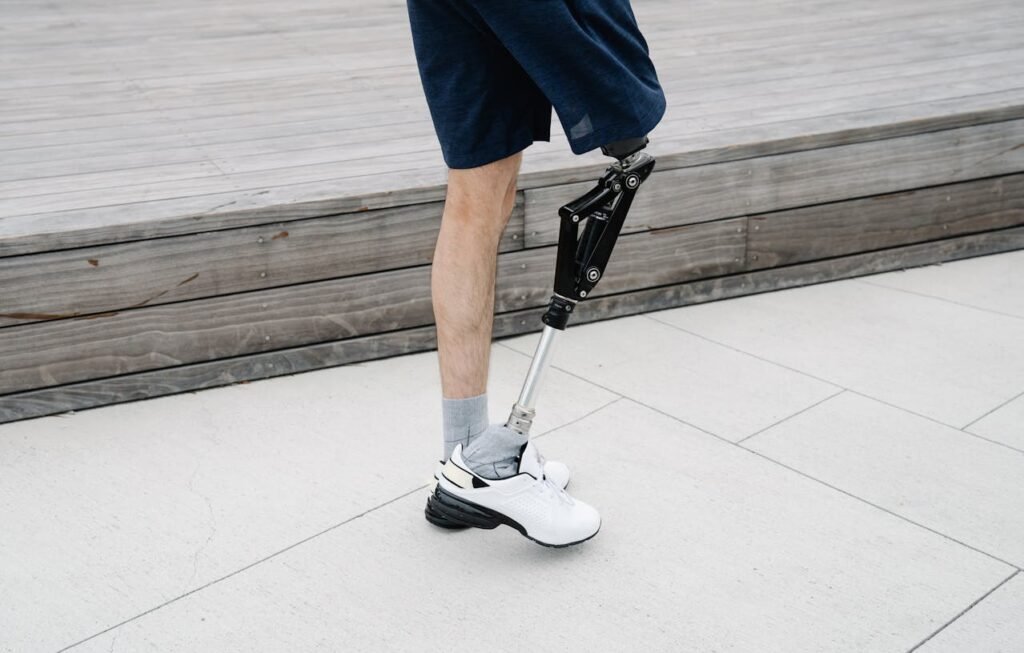For many people, travel means freedom—the joy of exploring new places, meeting new faces, and stepping outside familiar routines. But for someone with a prosthetic hand, especially in India, travel can bring a mix of excitement and uncertainty.
Airports, in particular, can feel intimidating. Security checks, metal detectors, and long queues sometimes make travelers with prosthetics anxious about how their device will be handled. Yet, with the right preparation, awareness, and confidence, air travel can be smooth, comfortable, and completely stress-free.
Today’s airports are far more inclusive than they once were. Staff are trained to handle prosthetic users with respect and care. With modern documentation systems and clear guidelines, you can move through security comfortably—without unnecessary delays or awkward questions.
This guide from Robobionics walks you through everything you need to know about traveling with a prosthetic hand in India—from preparation and packing to airport security, flight comfort, and post-arrival tips. It’s a complete roadmap to help you travel confidently, independently, and with peace of mind.
Preparing for Air Travel with a Prosthetic Hand
Understanding What to Expect at Airports
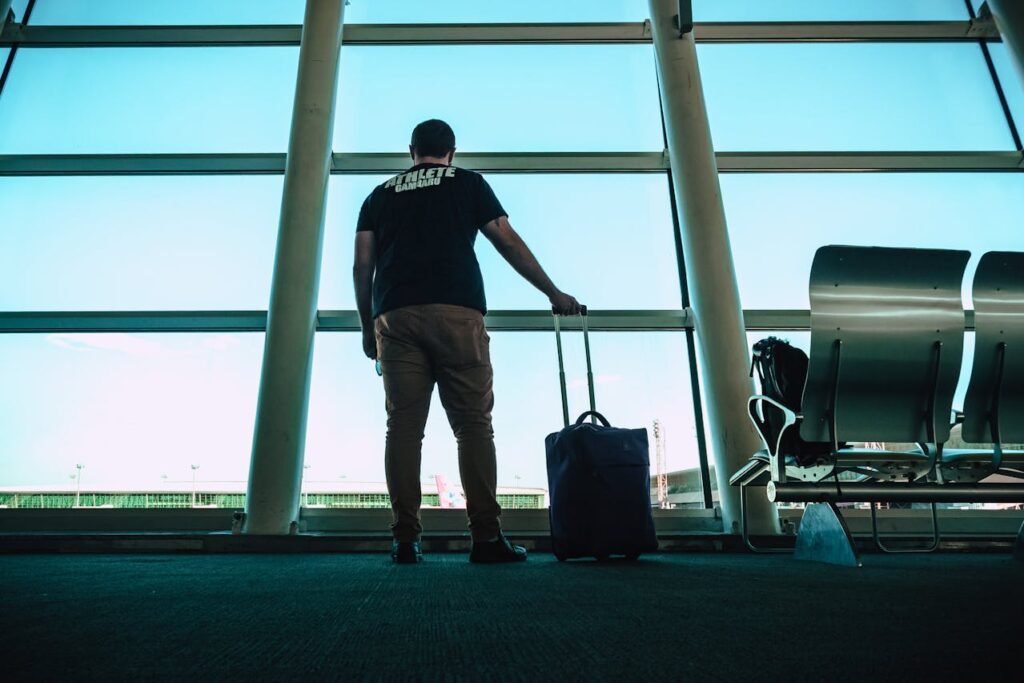
Before you even pack your bags, it helps to know what the airport experience will be like.
In India, airport security follows strict guidelines under the Bureau of Civil Aviation Security (BCAS). These rules are meant to keep everyone safe, but they also allow specific accommodations for people using medical or assistive devices, including prosthetics.
When you arrive at the airport, you’ll pass through a few checkpoints—baggage screening, personal security check, and boarding gate verification. As someone with a prosthetic hand, you may need to explain your device to the security officer, but the process is typically smooth and respectful.
Knowing these steps beforehand takes away the fear of the unknown and helps you move confidently through each stage.
Carrying Documentation and Certificates
While prosthetic hands are common today, it’s still wise to carry supporting documentation.
Bring a medical certificate or letter from your prosthetist stating that you are wearing a prosthetic limb. This can help clarify its medical nature if asked during security screening.
You can also keep your prosthetic provider’s contact details handy, especially if you’re traveling abroad or need quick verification.
Having these papers doesn’t just ease the process—it helps ensure that your prosthetic is handled appropriately, without unnecessary questioning or physical inspection.
Informing Airline Staff in Advance
When booking your ticket, most airlines in India provide an option to mention special assistance.
Checking this option alerts the staff that you are a prosthetic user. Once you arrive, ground staff can guide you through security and ensure that screening procedures are comfortable and private, if needed.
You can also inform the cabin crew after boarding. This helps them understand your comfort needs, like reaching for baggage or opening food containers, though most prosthetic users manage these easily.
It’s not about asking for help—it’s about creating a smoother, more respectful experience.
Choosing the Right Clothing for Travel
What you wear can make airport movement easier.
Loose, breathable clothing helps with comfort during long flights, especially if you’re wearing a myoelectric or mechanical prosthetic. Avoid tight cuffs or sleeves that might interfere with sensors or wires.
If your prosthetic is detachable, wearing half sleeves can simplify any manual inspection, should one occur.
The goal is ease—not only for yourself but for smoother coordination with airport staff during checks.
Carrying Tools and Batteries Safely
If your prosthetic hand uses batteries or removable parts, you’ll need to follow some special rules.
Airlines typically allow lithium-ion batteries in carry-on baggage, not checked luggage. Keep them in their original case and inform security staff during screening.
It’s also good practice to carry small repair tools, silicone liners, or cleaning wipes in your hand luggage. Just ensure sharp objects like screwdrivers are stored in checked bags, as they won’t be allowed past security.
Labeling small components can help prevent confusion during inspection or maintenance on the go.
Knowing Your Device Before You Travel
Familiarity with your prosthetic helps you handle any situation calmly.
Before your trip, practice removing or explaining the parts of your prosthetic. This way, if an officer asks to see or scan it, you can do so easily without feeling uneasy.
For myoelectric devices, check your charge before heading out. Long layovers or delays can drain power, so carrying a portable charger can be a smart idea.
Understanding your own device’s limits gives you peace of mind, whether it’s climbing stairs, lifting bags, or sitting through long hours.
Planning Your Airport Timing
Always arrive earlier than usual for your flight.
Prosthetic users may take slightly longer during security checks, especially at busy airports like Delhi, Mumbai, or Bengaluru. Reaching 2.5 to 3 hours before departure gives you enough time to move comfortably without rushing.
If you’re connecting flights, make sure there’s at least a 90-minute gap between them. This prevents stress in case one security line takes longer than expected.
Early arrival also allows you to find accessible restrooms, lounges, or charging spots for your prosthetic hand if needed.
Staying Relaxed Before Check-In
Anxiety is natural, especially if this is your first flight after getting your prosthetic.
To ease this, visualize the steps you’ll go through—from entering the airport to reaching your gate. The more familiar these steps feel in your mind, the calmer you’ll be in reality.
Carry a bottle of water and light snacks, as hydration helps with comfort and reduces restlessness.
Remember, prosthetic users travel every day through Indian airports without issue. With a bit of preparation, you’ll do the same—with confidence and ease.
Security Screening and Metal Detection for Prosthetic Hand Users in India
What Happens During Security Checks
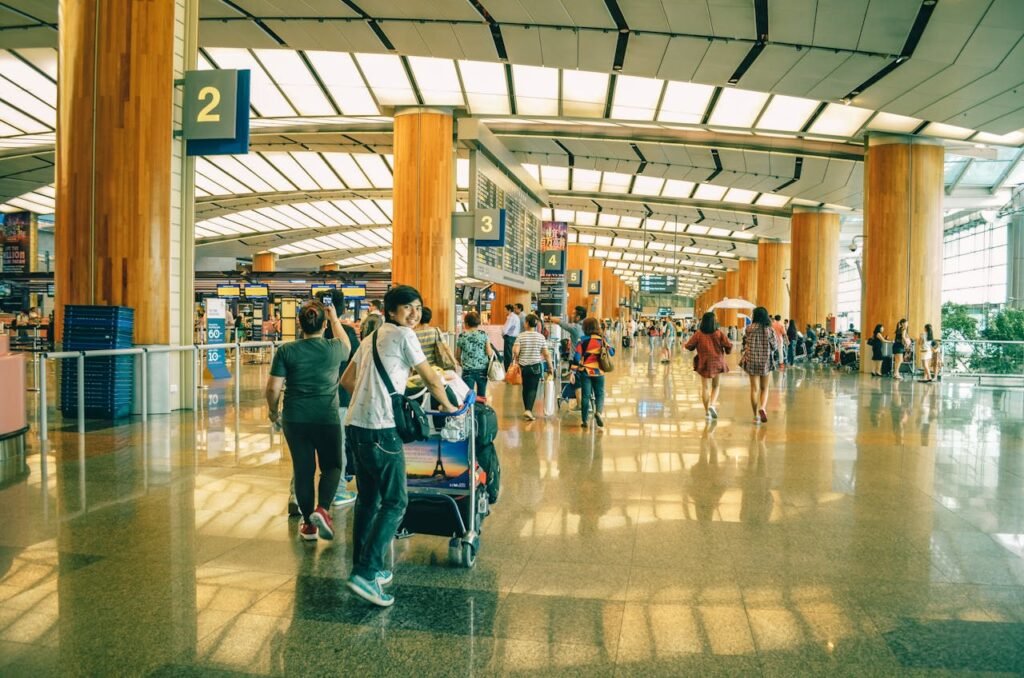
The security screening process is usually the most sensitive part of air travel for prosthetic users, but it’s also where clarity and confidence help the most.
At Indian airports, all passengers go through two main checks—baggage scanning and personal frisking. For prosthetic users, officers often make small adjustments in how these checks are done, to ensure comfort and dignity.
In most cases, the metal detector may beep if your prosthetic contains metal components. When this happens, the officer will ask you to step aside for a manual screening. This is completely routine and takes only a few minutes.
You will never be asked to remove your prosthetic in public. If needed, you can always request a private screening room, and security staff are trained to accommodate this respectfully.
Understanding the Rules Set by BCAS
The Bureau of Civil Aviation Security (BCAS) issues guidelines that apply to all Indian airports. These rules protect both passengers and staff.
According to BCAS, prosthetic limbs, braces, and mobility aids are allowed through checkpoints after appropriate screening. You cannot be forced to remove them unless there is a very specific security reason, and even then, it must be done in privacy.
If you ever feel uncomfortable or misunderstood, you can calmly mention that your prosthetic falls under medical assistive devices as defined by BCAS norms. Most officers are aware of this and will immediately proceed with care.
Informing Security Officers Proactively
When you approach the security gate, it’s best to let the officer know you are wearing a prosthetic hand.
This small gesture prevents confusion when the scanner beeps or during frisking. Simply saying, “I am using a prosthetic hand for medical reasons” helps them adjust the procedure accordingly.
You can also hand over your medical certificate or identification letter from your prosthetist if they request verification. In most cases, a brief explanation is enough, and you’ll be guided through quickly.
Being calm and polite helps both sides manage the process efficiently and respectfully.
The Role of Metal Detectors
Most prosthetic hands—especially mechanical and myoelectric ones—contain metal parts, motors, or wiring. These can trigger airport metal detectors.
When that happens, the officer may use a handheld detector to scan your prosthetic separately. You’ll simply be asked to hold your hand out as they check the area.
This scan only takes a few seconds and does not harm the device in any way. It’s a non-contact procedure meant only to confirm that your prosthetic is safe for boarding.
Understanding that this is a standard process removes much of the anxiety travelers feel.
Private Screening Options
Every Indian airport is required to provide a private room for passengers who need extra assistance during security checks.
If you’re uncomfortable with a public screening or worry about privacy, politely ask for a “private frisking area.” Staff will escort you to a separate room where the process is done respectfully, often by a same-gender officer.
Here, you can also explain any features of your prosthetic—like detachable parts, wires, or battery systems—so the officers understand it’s a medical device, not a threat.
This setting ensures you feel secure and in control throughout the process.
X-Ray Machines and Your Prosthetic
Unlike luggage, prosthetics are not meant to go through X-ray machines. You should never be asked to remove your prosthetic for scanning.
If an officer insists, remind them gently that it’s a part of your body and covered under assistive medical equipment guidelines. The officer can use alternative methods like handheld detectors or visual inspection instead.
X-ray machines are only used for carry-on items, not wearable devices. Knowing this rule helps you protect both your comfort and your prosthetic’s integrity.
Myoelectric and Battery-Powered Prosthetics
If you use a myoelectric hand, you may be asked about its power source.
Simply explain that it uses rechargeable batteries, much like a mobile phone. If necessary, you can show your battery pack to demonstrate safety.
Keep your charger and spare battery in your cabin bag, not in checked luggage. Some airlines may ask you to store batteries safely in a pouch or case to prevent short circuits.
Remember, officers are more interested in understanding your device than questioning it. The clearer your answers, the faster the process becomes.
Body Scanners and Sensitivity
Some airports, especially larger ones like Delhi and Mumbai, have full-body scanners.
These scanners use harmless radio waves to detect concealed objects. If your prosthetic shows up as an outline, officers may ask you a few questions or do a quick pat-down.
The process is brief and professional. You won’t need to remove your prosthetic or demonstrate its use.
In such moments, staying relaxed helps communicate trust. The staff are used to seeing prosthetic users every day and treat the situation as routine.
Communication Makes the Difference
The best tool you can carry through airport security isn’t a document—it’s communication.
A calm tone, simple words, and friendly cooperation go a long way. Most officers genuinely want to help but may not always know the technical details of every prosthetic model.
By explaining your needs clearly—such as avoiding strong pressure on certain parts or keeping your prosthetic dry—you guide them on how to assist you better.
Being open turns what could feel like an uncomfortable encounter into a smooth and even positive one.
Emotional Readiness for the Experience
Security checks can feel awkward the first time, but remember that every traveler goes through scrutiny in some form.
Your prosthetic does not make you different—it just requires a few extra steps. With preparation and calmness, those steps blend into the usual travel rhythm.
Many women find that after their first or second flight, the process becomes second nature. The key is to focus on the journey ahead, not the few minutes spent at the scanner.
Your confidence sets the tone for how others treat you. When you walk through with assurance, the world follows your lead.
Boarding, In-Flight Comfort, and Handling Your Prosthetic During Travel
Moving Comfortably Through the Airport
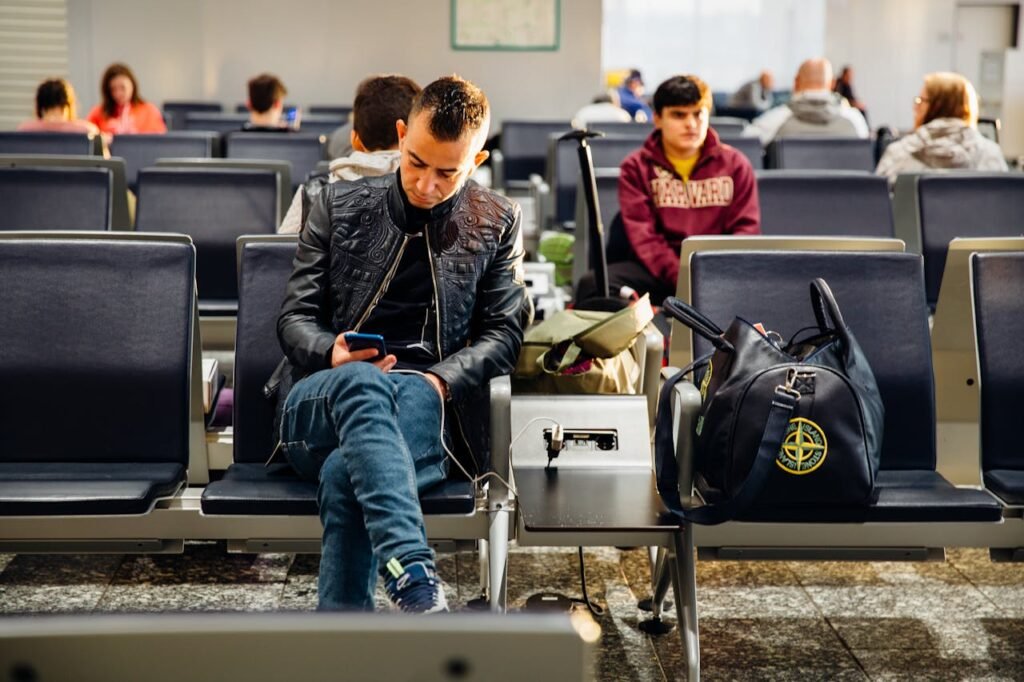
After clearing security, the rest of your airport journey becomes easier. You can focus on comfort and confidence as you make your way to the gate.
Walking long distances or carrying luggage can sometimes feel tiring, especially if your prosthetic hand is mechanical or heavier in design. Most airports now offer assistance services or electric buggies—feel free to ask the airline staff if you’d like help getting to your gate.
If you’re traveling alone, use luggage with wheels and lightweight handles. This allows you to move freely without putting strain on your prosthetic or socket.
Taking small breaks between terminals or while waiting for boarding helps your muscles stay relaxed and prevents fatigue before the flight.
Managing Carry-On Bags
For prosthetic users, handling carry-on bags efficiently is about planning ahead.
Choose a bag with wide straps or a crossbody design that keeps your hands free. If your prosthetic hand has grip functionality, use it to stabilize the bag handle rather than bearing the full weight.
You can also request assistance while lifting bags into the overhead bin. Cabin crew members are trained to help passengers safely, and most are happy to lend a hand when asked politely.
Avoid overloading your carry-on. Keeping it light reduces effort during boarding and prevents unnecessary wrist strain.
During Boarding and Seating
When boarding begins, you may choose to enter a little earlier if pre-boarding for passengers with medical devices is available.
Early boarding helps you settle without the rush of crowds. You can place your bag, adjust your prosthetic if needed, and make yourself comfortable before others arrive.
If your prosthetic is detachable, you can remove it once seated to relax during the flight. However, most women prefer keeping it on, especially if it’s lightweight and doesn’t interfere with movement.
Always choose an aisle seat when possible—it provides easier access to the restroom and allows more space for arm movement.
In-Flight Adjustments and Comfort
Air pressure changes during flights can sometimes cause mild discomfort for prosthetic users, especially around the socket area.
To manage this, gently move your arm and wrist every half hour. Small motions help maintain circulation and prevent stiffness.
If you wear a silicone liner, ensure it’s snug but not tight. Cabin dryness can make your skin feel sensitive, so moisturizing before boarding can help maintain comfort.
Keep a small cleaning cloth in your pocket to wipe away sweat or moisture buildup. This keeps both your skin and the prosthetic fresh through long flights.
Handling Electronic Prosthetics
For women using myoelectric or powered prosthetics, the flight environment brings a few extra considerations.
Once you’re seated, switch your prosthetic to a neutral or rest mode. This prevents unintentional activation due to turbulence or tight seating.
If your device has Bluetooth or wireless connectivity, check with the airline before switching it on. Most prefer you to keep all transmitting functions off during takeoff and landing.
You can safely recharge your prosthetic batteries during layovers if you have a portable power bank. Just ensure you follow airline guidelines for electronic device charging.
Interacting with Cabin Crew
Cabin crew members are trained to assist passengers with disabilities or assistive devices.
If you need help opening a food packet, handling a drink, or accessing overhead compartments, don’t hesitate to ask. Communicating early helps them understand your comfort level without making it awkward.
They are also discreet and professional, ensuring you feel respected throughout your journey. For longer flights, you can request your food to be served in a way that’s easier to handle—like using one utensil or finger food options.
The goal is to stay comfortable while maintaining your independence.
Handling Meals and Drinks
Airplane trays can be narrow, so positioning your arm comfortably is key.
If you’re wearing a prosthetic hand, use it to steady the tray or cup while eating. The natural grip holds objects firmly without slipping.
For mechanical users, keeping the hand in a slightly open position provides better balance while using the other hand to eat.
After meals, you can use a napkin to clean your prosthetic’s surface. Avoid spilling liquid near battery compartments if you use a powered version.
Resting with Your Prosthetic
Flights lasting several hours can make your arm feel heavy if kept in one position.
Rest your elbow on the armrest and occasionally rotate your shoulder or wrist. If you’re wearing a detachable prosthetic, you can temporarily remove it and place it in a clean bag on your lap or side pocket.
It’s also helpful to use a small travel pillow between your arm and the seat to reduce socket pressure. This makes naps more relaxing and prevents stiffness after landing.
Coping with Cabin Temperature and Humidity
Airplanes often get cool and dry during long flights. For prosthetic users, dry air can sometimes affect skin comfort under the socket.
Apply a gentle moisturizer before boarding and wear breathable clothing around the prosthetic area. Avoid thick fabric that traps heat or causes friction.
If you start feeling discomfort, loosen your clothing around the socket or gently flex your arm to restore comfort.
Small movements make a big difference in maintaining circulation and balance throughout the journey.
Staying Confident and Relaxed
One of the most important aspects of traveling with a prosthetic hand is maintaining your sense of ease.
People may notice your device, but most are simply curious or inspired. If someone asks about it, respond in the way you feel most comfortable—sometimes a smile or short answer is enough.
Remember, your confidence influences how others interact with you. The more natural you are about your prosthetic, the more normal the experience feels for everyone.
By the time your flight lands, you’ll realize that the prosthetic didn’t limit your journey—it simply traveled along with you, like any other part of who you are.
Handling Immigration, Arrival, and Public Transport After Landing
Navigating Immigration and Customs
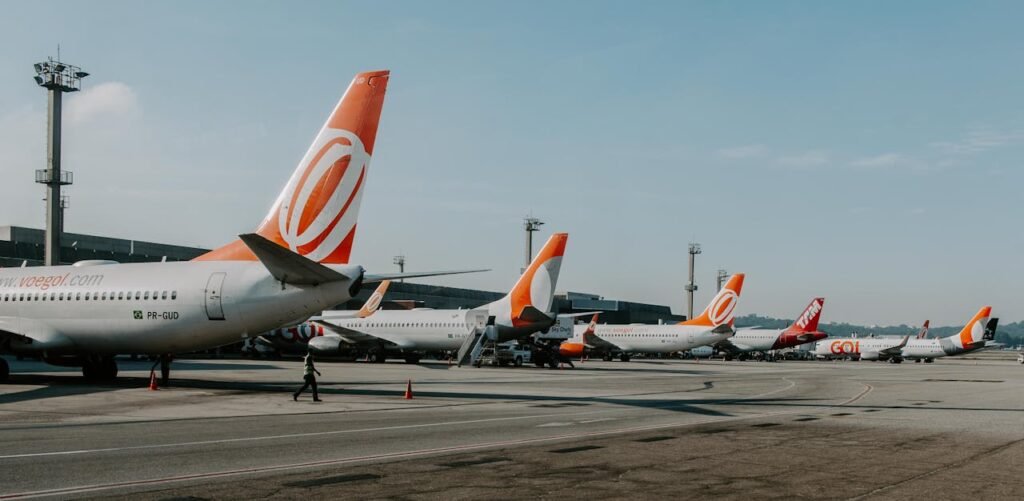
Once your flight lands, the next steps are immigration and customs, especially if you’re on an international route.
For domestic flights, the process is quicker, but international travelers may need to pass through document verification and baggage scanning. Prosthetic users rarely face any issues during these steps.
At immigration, officers may simply ask standard questions about your trip. Your prosthetic hand does not require any special declaration—it’s part of your personal assistive equipment.
When passing through customs, if you’re carrying spare batteries, chargers, or prosthetic components, declare them honestly. Labeling and keeping them in original packaging helps avoid confusion.
Transparency is key here. Customs officers are generally understanding once they know the items are for medical use.
Airport Assistance After Landing
Most major Indian airports offer special assistance for passengers with medical or mobility needs.
If you had requested support at the time of booking, airline staff will likely be waiting to guide you. They can help with baggage retrieval, immigration queues, or transfers between terminals.
You can also ask for a wheelchair or buggy if you’ve had a long flight and feel tired. Remember, assistance doesn’t mean dependency—it’s simply an option to conserve energy after a long journey.
Once you collect your luggage, you can take a short break to adjust your prosthetic if needed. Reattaching or tightening it before heading out ensures comfort for the rest of your travel.
Recharging and Maintenance Between Flights
If you have a connecting flight, layovers are the perfect time to check your prosthetic’s condition.
Find a clean spot or restroom with a mirror, and quickly examine your socket fit and liner. If it feels loose or warm, wipe and reset it gently.
Airports like Bengaluru, Delhi, and Mumbai have power sockets at lounges and near boarding gates, so you can recharge your myoelectric prosthetic’s batteries easily.
Carrying a universal plug adapter is also helpful if you’re traveling internationally, as charging ports differ between countries.
These small maintenance breaks keep your device performing smoothly for the rest of the trip.
Passing Security Again for Connecting Flights
If your trip includes a connecting flight, you’ll pass through security screening again before boarding the next one.
Fortunately, you now know exactly what to expect and how to handle it with confidence.
Show your medical letter again if needed, and mention you’ve already been screened once. Security personnel are usually considerate and will ensure your process is quick.
Sometimes, different airports may have slightly different protocols, but the overall approach to prosthetic users remains professional and respectful across India.
Using Restrooms at Airports
For women using upper-limb prosthetics, restrooms at airports are usually manageable with some planning.
Many modern airports have accessible stalls with wider doors and grab bars. Choose these if available—they offer extra space to adjust your prosthetic if required.
Carry a small pouch with wipes and moisturizer to freshen your liner or skin. Keeping your hand dry is important, especially after long flights.
If your prosthetic uses electronics, avoid washing it under running water. Instead, clean it gently with a dry cloth or tissue to remove sweat or dust.
Public Transport Options from the Airport
Once you exit the airport, you’ll find several transportation options—taxis, metros, airport buses, and app-based cabs like Ola and Uber.
If you’re carrying luggage, always choose transport with minimal physical handling. Most airports have porters or trolleys near the exit who can assist you in loading bags.
For women traveling alone, pre-paid taxi counters or verified cab services are safer. Keep your phone charged and location sharing on when using these services.
If you prefer public transport, metros in cities like Delhi and Bengaluru are equipped with escalators and lifts. You’ll find staff ready to help if you ever need an extra hand during entry or exit.
Managing Luggage After Landing
Handling heavy bags after a flight can be tiring, especially when adjusting to temperature and humidity changes.
Use luggage with smooth wheels and extendable handles, so your prosthetic doesn’t have to bear too much weight. If possible, place your backpack across both shoulders to distribute balance evenly.
When picking up luggage from the belt, position yourself sideways to get better grip and leverage. You can use your natural arm for lifting and your prosthetic for stabilizing.
Taking small steps instead of lifting the full weight at once prevents strain and keeps your posture safe.
Weather and Environmental Adjustments
India’s climate can change drastically depending on your destination.
If you’re arriving in a humid city like Chennai or Mumbai, keep a clean cloth handy to wipe your prosthetic often. Moisture can affect socket comfort and liner grip.
In cooler cities like Delhi during winter, you may want to wear a soft cotton sleeve under your prosthetic for warmth. Avoid thick fabrics that can cause sweating once you enter warmer indoor spaces.
Adapting your prosthetic care routine to local weather ensures consistent comfort, no matter where you travel.
Staying Confident During Transit
Every journey strengthens your confidence. The more you travel, the more familiar the process becomes.
Airport officers, airline staff, and transport workers in India are becoming increasingly aware of accessibility needs. Once you’ve gone through it once or twice, you’ll see that travel is not a challenge—it’s just a matter of preparation.
Your prosthetic is part of you. It doesn’t need extra explanation or justification—it just deserves the same respect as any other part of your body.
With calm communication and a touch of patience, you can move through any airport as smoothly as anyone else.
Conclusion
Traveling with a prosthetic hand in India is not about overcoming barriers—it’s about knowing the system, preparing smartly, and moving with quiet confidence.
Every part of the journey, from check-in to boarding, becomes easier when you understand what to expect. Carrying the right documents, communicating clearly with staff, and managing your prosthetic comfortably during flights can turn what once felt intimidating into a seamless routine.
The truth is, airports and airlines today are far more inclusive than they were even a decade ago. Staff are trained, facilities are improving, and travelers with assistive devices are being treated with the dignity they deserve.
For women in particular, traveling with a prosthetic hand isn’t just about reaching a destination—it’s about reclaiming freedom. Whether you’re flying for work, leisure, or family visits, every successful trip builds confidence and independence.
Take pride in your journey. Your prosthetic hand isn’t a limitation—it’s a companion designed to help you explore, experience, and live fully. The more you travel, the more it feels like second nature.
At Robobionics, we believe that technology should empower people to live without hesitation. With the right preparation and support, every airport, every flight, and every adventure can feel as open and welcoming as the skies themselves.



